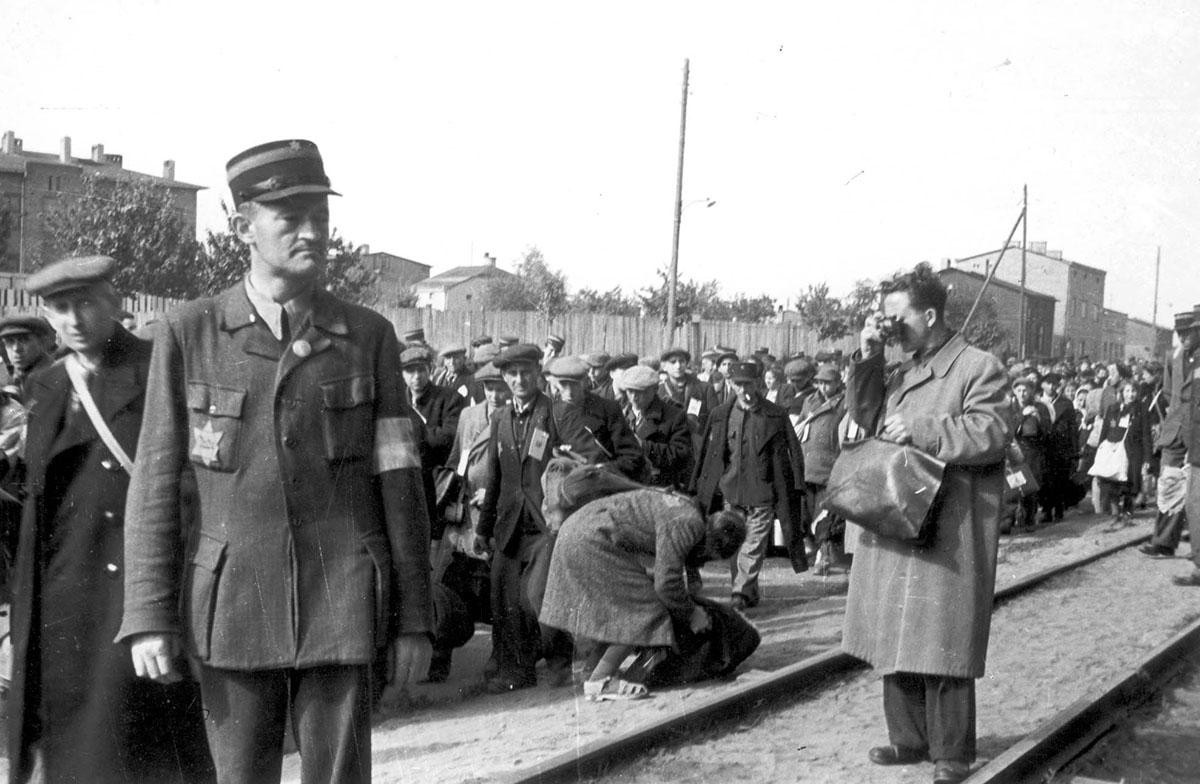
Yad Vashem Photo Archives, 4062/446

The story of the "Final Solution of the Jewish Question” is one that required great planning, finances and meticulous implementation by the Nazis. The deportation of hundreds of thousands of Jews from all over Europe to the notorious killing sites “in the East” needed to be coordinated. Yad Vashem's International Institute for Holocaust Research has undertaken the arduous task of mapping these infamous transportations of "human cattle" to Nazi German concentration and extermination camps for their annihilation.
Dr. Cornelia Shati-Geissler, Director of the Deportations of Jews Project at the International Research Institute was recently interviewed. She gave her thoughts and impressions on this most important endeavor.
What are the aims of Yad Vashem's Deportations of Jews project, entitled “Transports to Extinction", and what resources do you use in your work?
Yad Vashem's International Institute for Holocaust Research launched this project in 2007 in order to collect reliable and detailed information about each transport route, the bureaucratic system that enabled it to operate, and the socio-economic background of the victims, creating a comprehensive picture of the deportation apparatus, its perpetrators and its victims during WWII. The researchers make use of a wide range of documents, including official Nazi documentation as well as personal accounts of survivors conducted after the end of the war in 1945.
The aim of the research project is to collect details about how European Jewry was brought to the brink of extinction. "Transports to Extinction" is thus aiming to reconstruct all transports of Jews from every Jewish community carried out by the Nazi regime and its collaborators during the period of the Shoah. Through the use of documentation from various sources including official German reports, personal testimonies, letters and diaries written by both perpetrators and victims alike, we have been able to piece together, like a mosaic, the story of this crucial element of the "Final Solution."
It is not always possible to use eyewitness accounts as a historical source. Why do you think the use of these reports are particularly important?
Eyewitness reports are often accused of being historically inaccurate. Sometimes there are discrepancies between details, such as the date and time of a particular transport, or exact figures of how many people were included on the transport. If one source connects the departure date with a Jewish holiday, then the information tends to be more accurate. When several reports use the same information, we believe the source of information to be highly reliable. In any case, we try whenever possible to cross-verify different data, such as, for example, a report from the Reichsbahn to the German administration of the Lodz ghetto. At first glance one would assume such a document to be reliable, but even in perpetrator documents, data can be intentionally or unintentionally inaccurate.
Having said that, transport lists are one of our most important sources. They depict visually how people were turned into numbers, and also provide key data on the deportees for further research, such as name, date of birth, last registration address and profession. Nevertheless, in order to understand the process and its meaning for those being deported, the documents of the Jewish communities, along with the certificates of the deportees, is essential. We cannot leave the history of the deportations to the perpetrators' perspective alone. The mass deportations could not be accurately or ethically reconstructed without the victims' voices.
Which deportations have you been able to determine so far, and which are you currently working on?
At the moment we are reconstructing and publishing the last deportations we know about in and from the area of Poland annexed by Germany in October 1939, known as Warthegau. This includes deportations in the context of liquidations of ghettos in villages and towns in this region to the Lodz ghetto (Litzmannstadt) and to the Chelmno death camp (Kulmhof), as well as the transports from the Lodz ghetto to Chelmno and to Auschwitz-Birkenau. Transports departing from the Warthegau to the General Government ("Nahplan" deportations) as early as 1939/1940 are also included, as well as the early "euthanasia" transports in the Warthegau and the deportations from this region to the forced labor camps.
The database is updated at regular intervals. It currently provides information on approximately 1,500 transports that left Germany, Austria and the so-called “Protectorate of Bohemia and Moravia,” as well as France, Greece, Luxembourg, Belgium and the Netherlands, bringing Jews to Eastern Europe and as well as from the Warthegau to other points, between 1939 and 1945. Research is conducted in a comprehensive manner from west to east, thereby also depicting the geographical extent of the deportations during the Shoah.
For 2021, we plan to open up the research to the area of the General Government in the part of Poland that was occupied by Germany.
Continuation to follow in Part II of our interview with Dr. Shati-Geissler, Director of the Deportations of Jews Project at Yad Vashem.
This blog was originally published in German.










